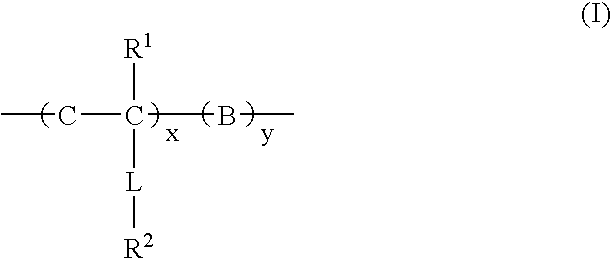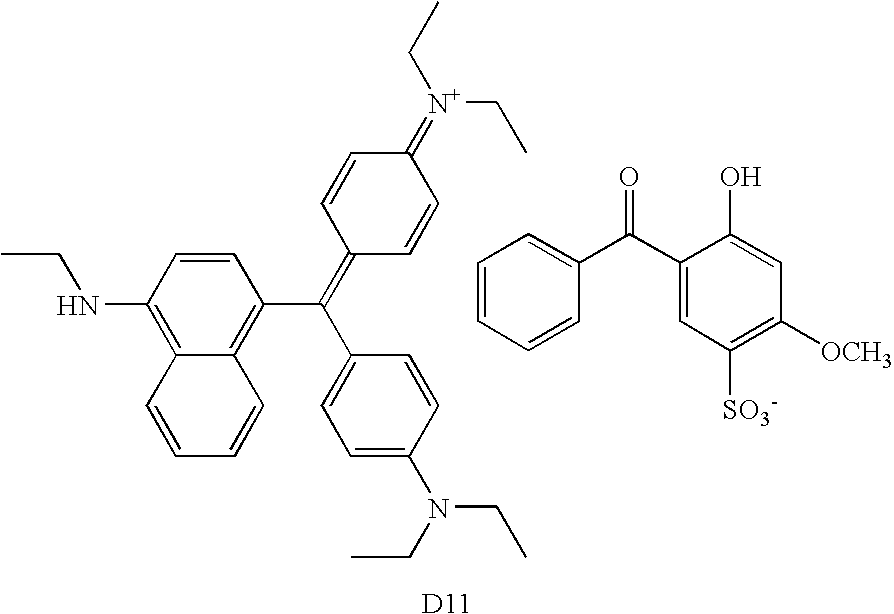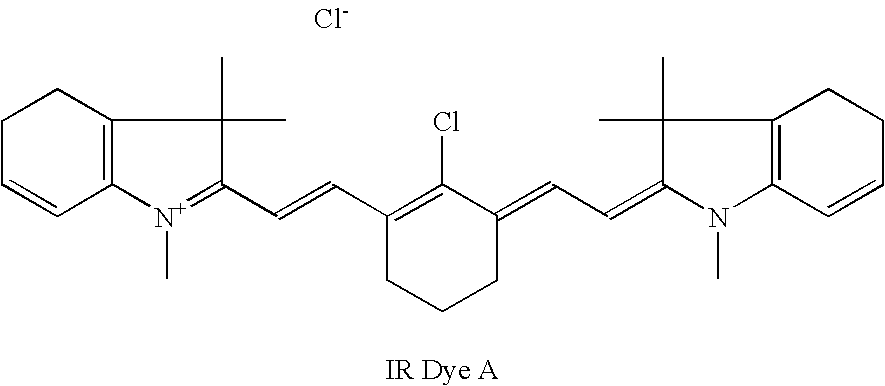Multilayer imageable element containing epoxy resin
a multi-layer, epoxy resin technology, applied in the direction of lithography, photosensitive materials, instruments, etc., can solve the problems of time-consuming process, affecting the image resolution, and the one providing one of these properties may change slightly, so as to improve image resolution, image speed, and shelf life. the effect of improvemen
- Summary
- Abstract
- Description
- Claims
- Application Information
AI Technical Summary
Benefits of technology
Problems solved by technology
Method used
Image
Examples
examples
[0105]The components and materials used in the examples and analytical methods were as follows:
[0106]MEK is methyl ethyl ketone.
[0107]DEK is diethyl ketone.
[0108]PGME is 1-methoxypropa-2-ol. It is also known as Dowanol PM.
[0109]BLO is γ-butyrolactone.
[0110]D11 dye is ethanaminium, N-[4-[[4-(diethylamino)phenyl][4-(ethylamino)-1-naphthalenyl]methylene]-2,5-cyclohexadien-1-ylidene]-N-ethyl-, salt with 5-benzoyl-4-hydroxy-2-methoxybenzenesulfonic acid (1:1) as supplied by PCAS (Longjumeau, France).
[0111]
[0112]IR Dye A is an infrared absorbing dye was obtained from Honeywell (Morristown, N.J.).
[0113]
[0114]IR dye B is Kayasorb PS210CnE, an infrared absorbing dye as supplied by Nippon Kayaku Co, Ltd. (Tokyo, Japan).
[0115]IR absorbing Dye C was obtained from Eastman Kodak Company and is represented by the following formula:
[0116]
[0117]ACR-1478 is a copolymer having recurring units derived from N-phenylmaleimide (41.5 mol %), methacrylamide (37.5 mol %), and methacrylic acid (21 mol %).
[011...
examples 1 – 6
Examples 1–6
[0140]Imageable elements containing the various epoxy-containing polymers described herein in the outer (top) layer were prepared as follows:
[0141]Inner layer formulations were prepared with the components described in TABLE IV below and applied to Substrate A using a 0.012 inch (0.03 cm) wire-wound bar and dried for 30 seconds at 135° C. to provide a dry coated film of approximately 1.5 g / cm2.
[0142]Topcoat (outer layer) solutions were prepared with the components described in TABLE V below and applied with a 0.006 inch (0.015 cm) wire-wound bar and dried at 30 seconds at 135° C. to provide a dry coat weight of approximately 0.60 g / cm2.
[0143]
TABLE IVInner Layer Formulations Based on 80 g of Coating Solution with 7.0% Non-volatilesBYK30710% solutionJK69ACR1478IR Dye AIR Dye BIR Dye Cin DEKSolvent*Inner Layer A4.55600.56000.4500.36474.072Inner Layer B04.55600.5600.4500.36474.072*Solvent mixture - MEK / PGME / BLO / water 50 / 30 / 10 / 10 by weight.
[0144]
TABLE VUpper Layer Formulation...
PUM
| Property | Measurement | Unit |
|---|---|---|
| weight % | aaaaa | aaaaa |
| weight % | aaaaa | aaaaa |
| weight % | aaaaa | aaaaa |
Abstract
Description
Claims
Application Information
 Login to View More
Login to View More - R&D
- Intellectual Property
- Life Sciences
- Materials
- Tech Scout
- Unparalleled Data Quality
- Higher Quality Content
- 60% Fewer Hallucinations
Browse by: Latest US Patents, China's latest patents, Technical Efficacy Thesaurus, Application Domain, Technology Topic, Popular Technical Reports.
© 2025 PatSnap. All rights reserved.Legal|Privacy policy|Modern Slavery Act Transparency Statement|Sitemap|About US| Contact US: help@patsnap.com



